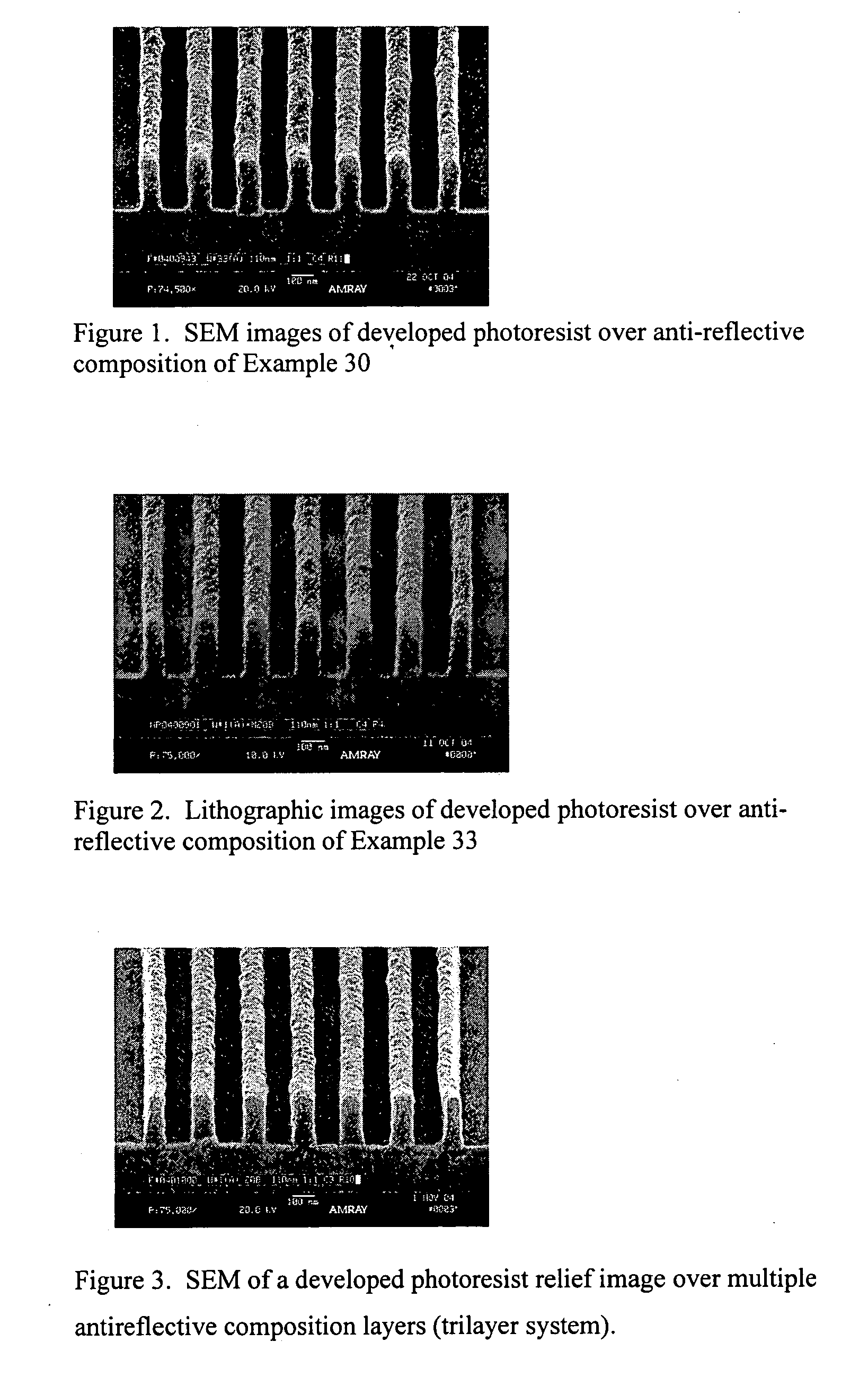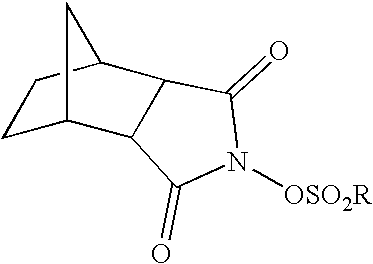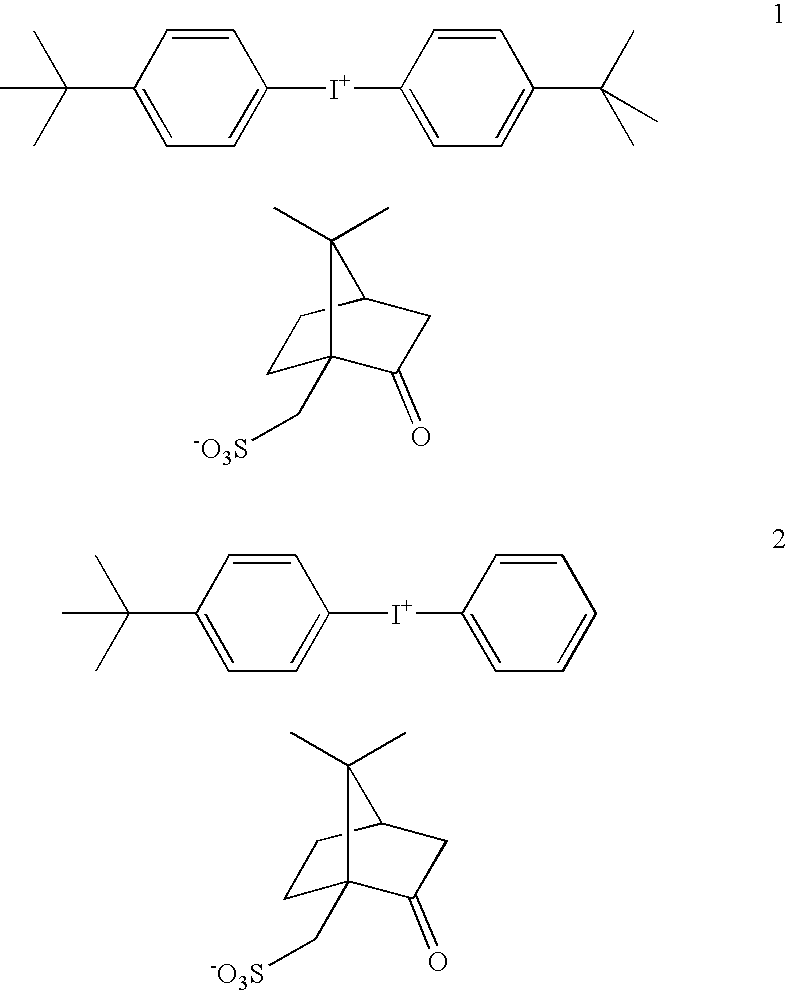Coating compositions for use with an overcoated photoresist
a technology of coating compositions and photoresists, applied in the field of compositions, can solve the problems of difficult effective imaging of resist layers, difficult to achieve resist layer development resolution, and difficulty in achieving resist layer development, etc., and achieve the effect of improving lithographic results
- Summary
- Abstract
- Description
- Claims
- Application Information
AI Technical Summary
Benefits of technology
Problems solved by technology
Method used
Image
Examples
examples 1-26
Syntheses of Resins
Example 1
[0099] A Terpolymer Consisting of Styrene, 2-hydroxyethylmethacrylate and methacrylate Monomers with a Mole Ratio of 30:38:32 was Synthesized According to the Following Procedure
[0100] The monomers (styrene, 99% pure from Aldrich, 169.79g; 2-hydroxyethylmethacrylate obtained from Rohm and Haas Corporation “Rocryl 400”, 269.10; and methyl methacrylate obtained from Rohm & Haas Corporation, 173.97 g), were dissolved in 2375 g of THF in a 5 L 3-necke round bottom fitted with overhead stirring, a condenser, and a nitrogen inlet. The reaction solution was degassed with a stream of nitrogen for 20 min. The Vazo 52 initiator (11.63 g, from DuPont corporation) was added and the solution heated to reflux. This temperature was maintained for 15 hours. The reaction solution was cooled to ambient temperature and precipitated into 12 L of methyl tertiary butyl ether (MTBE) / cyclohexane (v / v 1 / 1). The polymer was collected by filtration under reduced pressure and dri...
example 2
[0101] A tetrapolymer of styrene:2-hydroxyethylmethacrylate:methylmethacrylate:n-butyl methacrylate in a mole % ratio of 30:38:31:1 was synthesized according to the procedure of Example 1; with the mole % of the initiator (Vazo 52) at 0.72%. Molecular weight analysis by gel permeation chromatography relative to polystyrene standards gave a weight average molecular weight of about 22646 and a number average molecular weight of about 10307 Daltons.
example 3
[0102] A tetrapolymer of styrene:2-hydroxyethylmethacrylate:methylmethacrylate:n-butyl methacrylate in a mole % ratio of 55:30:14:1 was synthesized according to the procedure of Example 1; with the mole % of the initiator (Vazo 52) at 0.27%. Molecular weight analysis by gel permeation chromatography relative to polystyrene standards gave a weight average molecular weight of about 124761 and a number average molecular weight of about 36638 Daltons.
PUM
| Property | Measurement | Unit |
|---|---|---|
| wavelength | aaaaa | aaaaa |
| wavelength | aaaaa | aaaaa |
| wavelength | aaaaa | aaaaa |
Abstract
Description
Claims
Application Information
 Login to View More
Login to View More - R&D
- Intellectual Property
- Life Sciences
- Materials
- Tech Scout
- Unparalleled Data Quality
- Higher Quality Content
- 60% Fewer Hallucinations
Browse by: Latest US Patents, China's latest patents, Technical Efficacy Thesaurus, Application Domain, Technology Topic, Popular Technical Reports.
© 2025 PatSnap. All rights reserved.Legal|Privacy policy|Modern Slavery Act Transparency Statement|Sitemap|About US| Contact US: help@patsnap.com



